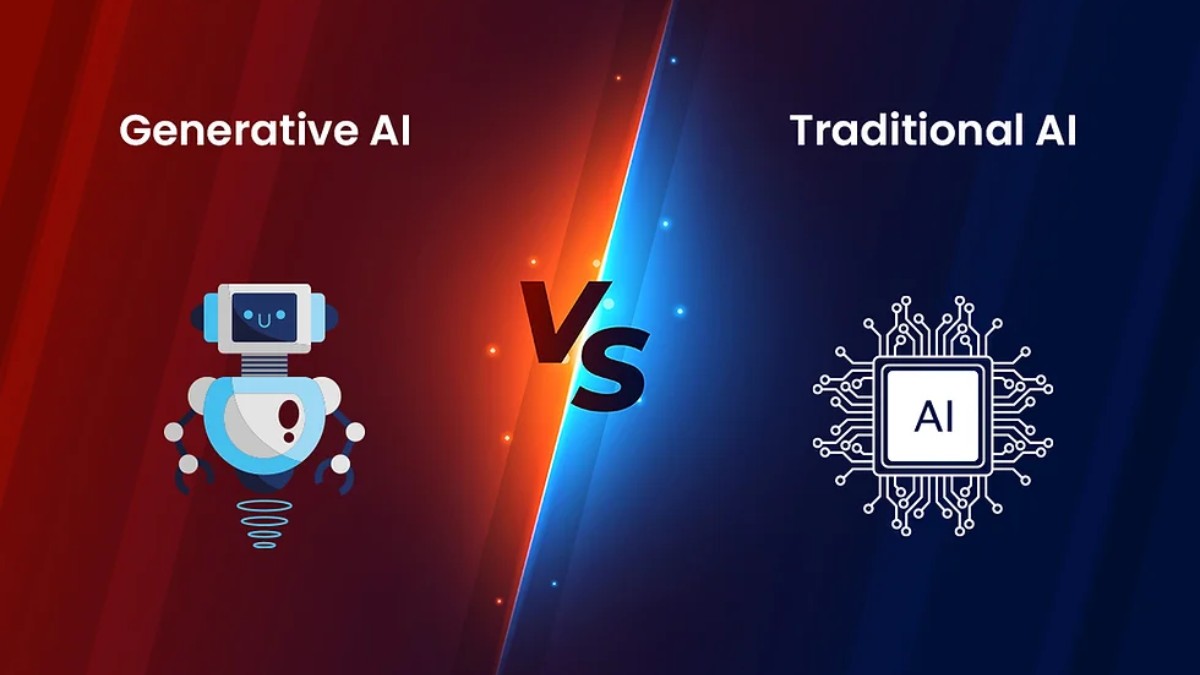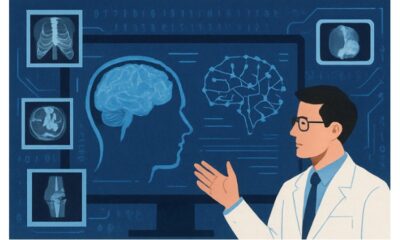Tech
Difference Between Generative AI and Traditional AI in Marketing

The average person probably wouldn’t be able to differentiate between a traditional AI use case and a generative AI use case, at least not the latter. It’s surprising how many marketers probably couldn’t either.
Why is this the case?
While generative AI has been in the headlines, there is a general lack of knowledge and awareness about it. This is clear from the findings of Coleman Parkes’ recent study on generative AI use in marketing. 95% of those in senior marketing management are unfamiliar with generative AI or its potential influence on the firm.
Let’s cut through the hype and look at the differences between generative AI and traditional AI, as well as some of the things you can do with both in marketing.
Key Differences between Generative AI and Traditional AI for CX Leaders
What are the key differences between generative AI and traditional AI, and why should companies have a firm grasp on both? Traditional artificial intelligence is, simply expressed, the vast subject of developing machines capable of performing activities that would normally need human intelligence.
Components of Traditional AI
Traditional AI consists of three basic components:
- Machine Learning (ML): These models and algorithms use data to learn and comprehend patterns and behaviors, enabling them to make predictions or decisions.
- Natural Language: This refers to the ability to process (natural language processing or NLP), understand (natural language understanding or NLU), and generate (natural language generation or NLG) human language in text or audio string form.
- Computer vision: The ability of computers to collect, evaluate, and understand visual information (such as images and photos) from external environments.
In contrast, Generative AI is a subset of traditional AI that focuses on creating new content rather than simply analyzing data. While generative AI is best known for content creation in marketing, it also has other applications, such as data exploration and summarization, marketing campaign and journey creation, dynamic pricing optimization, conversational marketing, customer journey mapping, market research, trend analysis, and search engine optimization.
Components of Generative AI
Generative AI is a technique with two major components:
- Generative Adversarial Networks (GANs): These are frameworks in which two neural networks compete to produce new content.
- Transformers: These are models that process words in relation to all other words in a sentence, hence increasing context understanding and text generation.
Traditional AI uses data and analytics to complete tasks, make predictions, and inform decisions, whereas generative AI focuses on creativity, summarization, and content generation. AI processes data using algorithms, but generative AI produces creative output using neural networks.
As a result of these differences, we see AI being utilized widely in automation, analytics, decisioning, learning, and process optimization, whereas generative AI is mostly used in art, media generation, and creative industries – at least for now.
Shaping the Future of Customer Engagement: Traditional and Generative AI
As traditional and generative AI becomes more advanced and pervasive in society, its impact on everyday consumer engagement activities will grow. From a martech standpoint, the software will most certainly progress to the point where a campaign brief is the only human-generated input — and the combination of AI and generative AI will be able to take it and build the strategy, audience, journey, content, and activation rules required to complete the rest.
However, before we can get to this point, marketers must first educate themselves about generative AI. According to the Coleman Parkes study, marketers’ primary worries with generative AI usage are data protection and privacy, followed by ethics, bias, accuracy, consumer trust, and internal trust. As marketers understand how to use generative AI responsibly, training will help alleviate some of their concerns.
In the topic of generative AI vs. traditional AI, there’s no challenge. They are both winners. It’s exciting to imagine a world in which traditional and generative AI are more tightly linked to improve both creativity and functionality in a variety of applications and use cases!
-

 Sports4 weeks ago
Sports4 weeks agoFIFA Club World Cup 2025: Complete List of Qualified Teams and Groups
-

 Sports3 weeks ago
Sports3 weeks agoAl Ahly vs Inter Miami, 2025 FIFA Club World Cup – Preview, Prediction, Predicted Lineups and How to Watch
-
Health2 weeks ago
Back to Roots: Ayurveda Offers Natural Cure for Common Hair Woes
-

 Tech2 weeks ago
Tech2 weeks agoFrom Soil to Silicon: The Rise of Agriculture AI and Drone Innovations in 2025
-

 Sports4 weeks ago
Sports4 weeks agoFIVB Men’s Volleyball Nations League 2025: Full Schedule, Fixtures, Format, Teams, Pools and How to Watch
-

 Startup3 weeks ago
Startup3 weeks agoHow Instagram Is Driving Global Social Media Marketing Trends
-

 Sports3 weeks ago
Sports3 weeks agoWorld Judo Championships 2025: Full Schedule, Date, Time, Key Athletes and How to Watch
-

 Sports2 weeks ago
Sports2 weeks agoFIBA 3×3 World Cup 2025: Full Schedule, Preview, and How to Watch





















